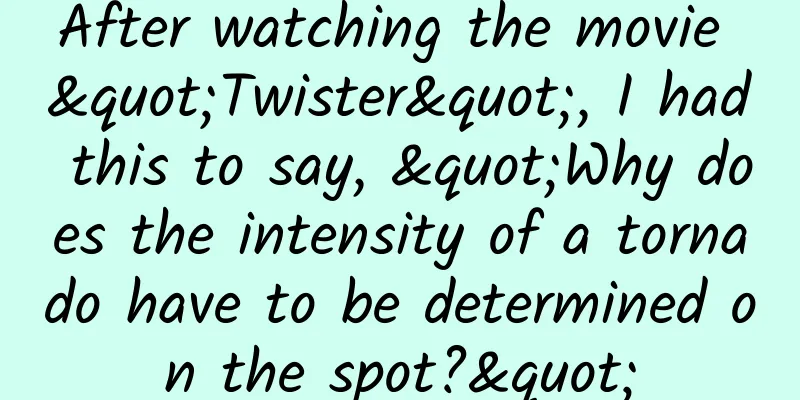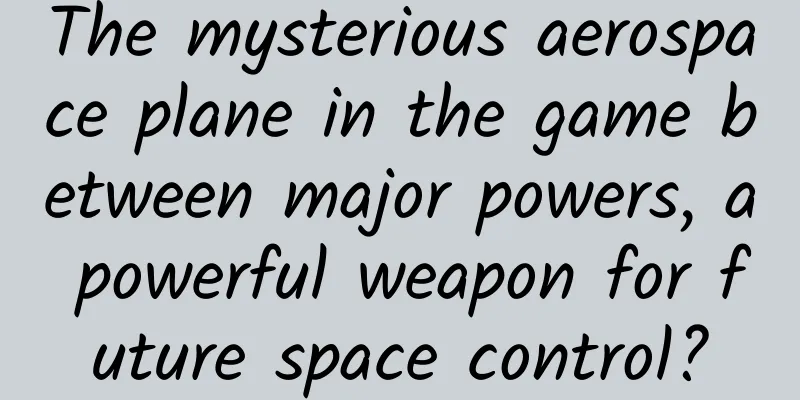After watching the movie "Twister", I had this to say, "Why does the intensity of a tornado have to be determined on the spot?"

|
I watched the newly released movie "Twister" over the weekend. The story is very compact and the pictures are very realistic. I am not a professional in commenting on the quality of the movie, but I would like to interpret two pieces of knowledge about tornadoes from the perspective of a real weather forecaster based on the scenes in the movie for the public who have watched the movie. One is that the first storm chase by the heroine in the movie failed, one of the reasons is that she did not expect the tornado to "change" from level one to level five. So what is the difference between level one and level five? In fact, like typhoons, the intensity of tornadoes is also graded, and the larger the number, the stronger the intensity. When the heroine and her companions were chasing the wind, they estimated that the level was F1, and the wind speed should be around 33-49 meters per second. The destructive power was manifested as: the roof was blown away, the mobile car house was overturned, and the moving car was blown off the road. The movie story said that the tornado reached the intensity of level F5, which means that the wind speed reached about 117-141 meters per second, and the destructive power was enough to blow up solid buildings, large cars were blown out more than 100 meters like missiles, and trees were blown away. Under such a strong situation, the plot that caused the car and the heroine's companions to be directly caught in the wind is still very real. Second, "The strength of a tornado is not determined by wind speed or air pressure, but by the damage." This is what the male protagonist said to the female protagonist (roughly speaking. I can't remember the original words). Everyone may wonder, high wind speed or low air pressure should mean strong destructive power, why not? You know, a tornado is a vortex with the strongest wind in the atmosphere, but it is very small. The measurement of its intensity remained an unresolved issue until the 1960s. Later, Tetsu Fujita, a Japanese-American meteorologist at the University of Chicago, proposed the "Fujita Scale" in 1971 with a classification idea similar to that of typhoons. That is, while dividing it according to a certain wind range, it also refers to natural destructive phenomena and divides its intensity into 7 levels (F0-F6), which has been used to this day. Considering that tornadoes are too small, the distribution of meteorological observation stations cannot be that fine, so to measure the wind and air pressure at the center of a tornado in real time is like using a big net to catch small fish. It is difficult to record the wind or air pressure at the center of a tornado through an observation station (not to mention that monitoring equipment is often damaged when a tornado strikes). Therefore, we can only go to the disaster site and infer the actual destructive power by the strength of different building structures or the degree of damage to other reference objects such as trees, and then determine the intensity level of the tornado in combination with the wind and pressure measured in the environment. Therefore, the intensity of a tornado is often not predicted, but "confirmed" afterwards. |
Recommend
New trends in Xiaohongshu’s ecological marketing in 2022!
Yesterday, the Xiaohongshu Business Ecosystem Con...
Subversive design - Apple cancels the Home button
[[138178]] Apple's next-generation iPhone upg...
Taro Performance Optimization: Complex Lists
Author | Kenny is a senior front-end development e...
CP Marketing Strategy of Internet Celebrities
The most popular CP on Tik Tok has broken up. On ...
Will the ill-fated Tizen make a comeback in low-end phones?
At the beginning of last year, Samsung launched t...
How to increase the number of likes on Tik Tok? How can I increase the number of likes on Douyin?
There are many popular videos on Douyin with very...
How much does it cost to customize the Lishui tea set mini program? What is the price quote for Lishui tea set customization through mini program?
How much does it cost to customize the Lishui tea...
Xu Xian's favorite "Suzhen", scientists went through hardships to discover it
After years of investigation and sample research,...
There have been multiple cases of hemorrhagic fever in Xi'an. Is it related to eating strawberries?
Recently, Xi'an has become a hot topic due to...
The "Nine-grid" traffic light is a misunderstanding! What happened to the traffic lights to become like this?
Recently, the "Nine-grid" traffic light...
Guangzhou shared power bank mini program has customized functions. How much does the shared power bank mini program cost?
With the advent of the 5G era, the network speed o...
In-depth review: Where is fast charging for new energy vehicles heading from the perspective of batteries?
1. Fast charging trends of batteries with differe...
Second-class e-commerce advertising | 15 product cases in 7 categories!
The hot August gathers the enthusiasm of midsumme...
Community operation: analysis of how to run an active community!
In today's world where everyone is addicted t...
After working in operations for so many years, have you ever thought about the definition of operations?
A few days ago, a friend was chatting with me and...









